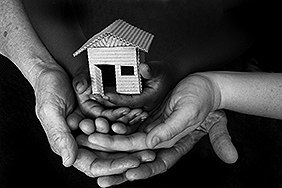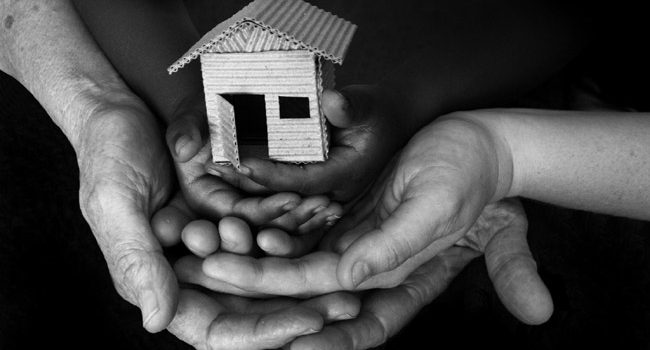Not too long ago, I read a piece at the Huffington Post with this title: “Cost of Military Jet Could House Every Homeless Person in U.S. with $600,000 Home.” Author Robbie Couch was reporting on a project, seven years behind schedule due to chronic incompetence, to create a fleet of F-35 Joint Strike Fighter jets. The $400 billion committed to the military, he revealed, was enough to fund the National School Lunch Program, now serving about 31 million students annually, for nearly a quarter of a century.

We shouldn’t have to say this, but I will: It’s hard to focus in school, much less thrive in any arena, when you’re homeless.
The Winter 2015 edition of the Child Welfare Watch, from the Center for NYC Affairs at the New School, doesn’t waste any time sounding the alarm for social distress. The number of very young children in homeless shelters—more than 10,700 five years old or younger—has increased roughly 60 percent over the past eight years. During the 2014 fiscal year, almost 19,000 little ones spent time in a shelter. “That’s something like 3 out of every 100 kids in that age range,” the authors wrote, or “enough…children to fill every seat in Barclay’s Center.”
They’re referring to the Brooklyn sports and entertainment complex, brought to us courtesy of “the world leader in financial services.” It’s not far from Bedford Stuyvesant, a community with a poverty rate above 40 percent—or Category IV, the highest in the Census Bureau’s taxonomy of family economic insecurity in extremis.
As the report makes clear, not only are young children’s lives destabilized, their healthy development is at risk. The result:” deep psychic injuries” during a time when “cognitive ‘architecture’ is still under construction.”
Kendra Hurley tells the story of Siena House, “A Shelter with a Mission,” a former convent in the Bronx, where young mothers and those expecting babies gather at weekly parenting workshops, led by volunteers—as is true of all programs in this oasis. The goal: to help homeless women, many of them reared in the city’s foster care system, become thoughtful parents. There’s also a life coach, and a nurse educator, who conducts morning workshops and does double-duty as a lactation specialist. Among the topics covered are baby massage and mastering the soothing bedtime ritual.
A Mommy and Me group was once in residence—integral to the mission of Sister Mary Doris, who founded Siena House 25 years ago for young, first-time mothers at the vulnerable stage before and after birth. She envisioned her intervention as a way to “short-circuit the trend toward having more children before you are able to provide for them or finish school or get some skills.” Here’s what Hurley found:
But Siena House has never fully realized that goal. The Department of Homeless Services does not allow family shelters to specialize in particular populations, like young or first-time moms. The city’s intake center for homeless families sends families to shelters depending not necessarily on what best suits a family, but on where there’s available space.
The fact that Siena House accepts only single mothers with young children is the result of a logistical fluke more than mission—the rooms in Siena House, a former convent, are small. They fit only a single bed and a crib, leaving room only for single mothers with babies, though the shelter manages to accommodate kids up to age 3.
Doris says Siena House’s small size makes this easier for staff to take to heart—staff and residents get to know each other well, paving the way for relationships that may be closer and more trusting than they would be if the shelter were larger. The shelter’s communal dining and workshops may also help fuel a sense of community.
Close, trusting relationships between infants and mothers, nurtured in a safe, warm environment, build that all-important cognitive architecture. Among the Center’s policy recommendation is the implementation of a pilot project to “define the nature and scope of serious emotional problems among parents with young children in homeless shelters, as well as to screen caretakers and their children for histories of trauma.”
New York City’s Children’s Cabinet has flagged the healthy development of our youngest poor children as high-priority. Smart idea. Bill de Blasio’s prekindergarten initiative—a bold experiment to combat inequality—won’t work unless we attend to this urgent business.

